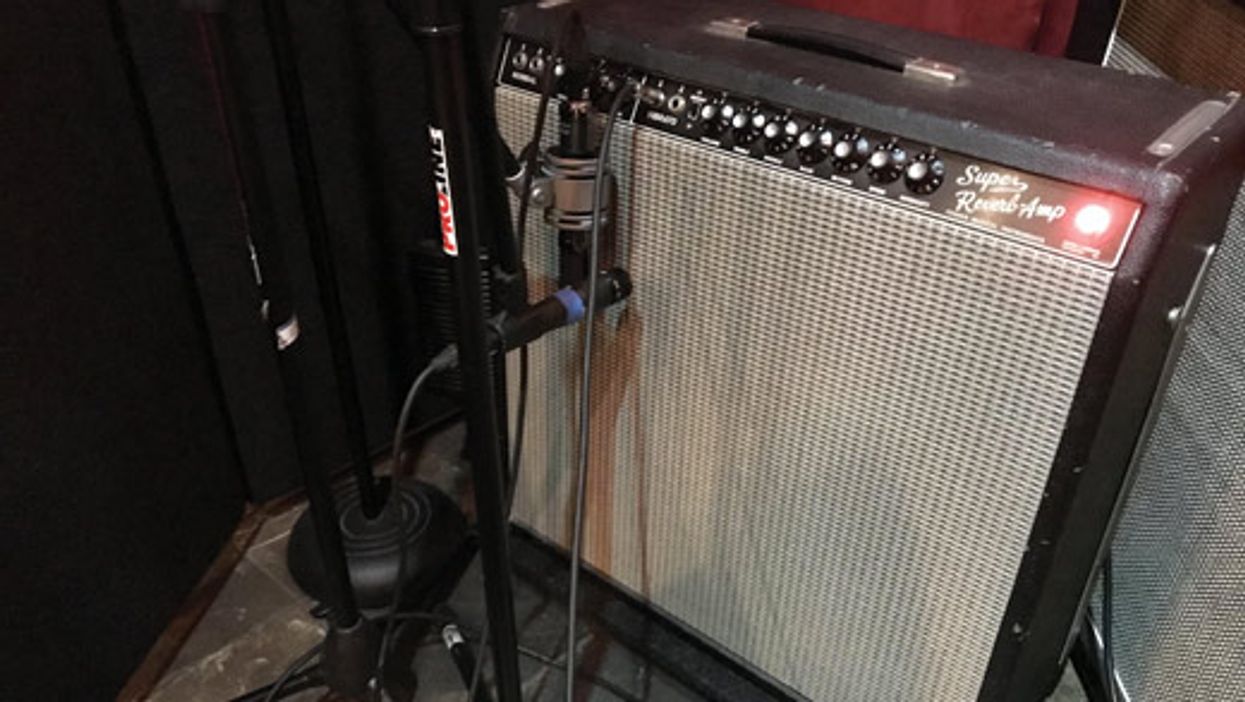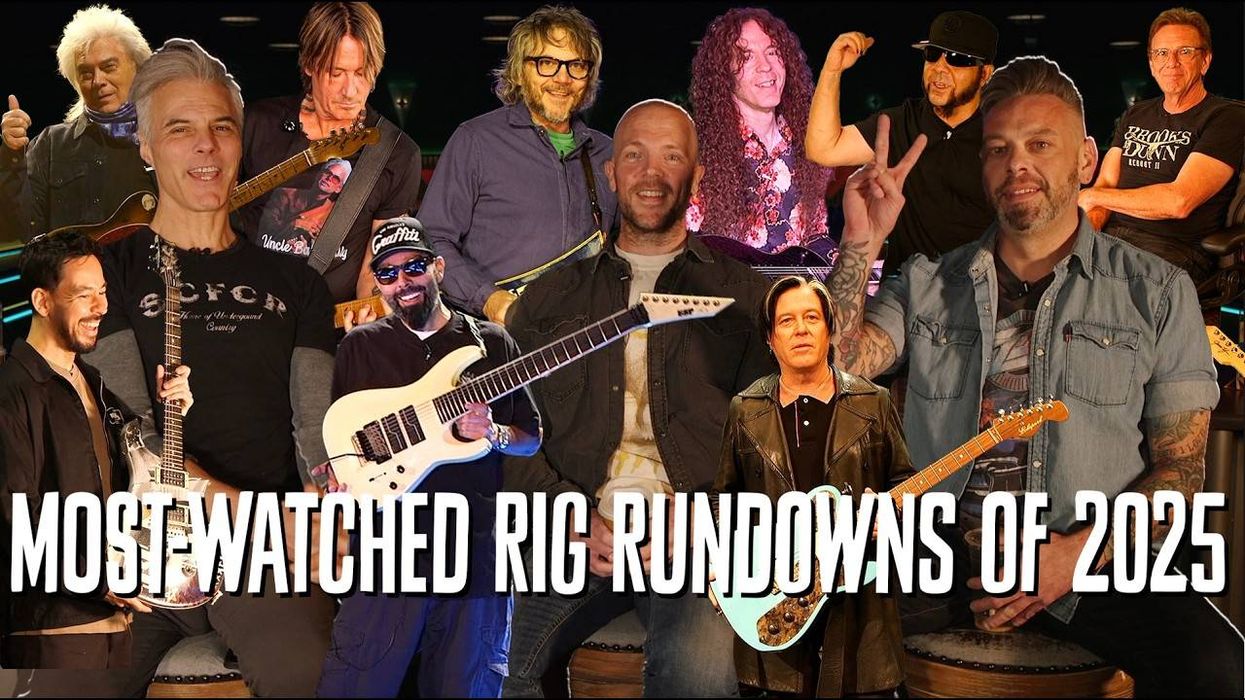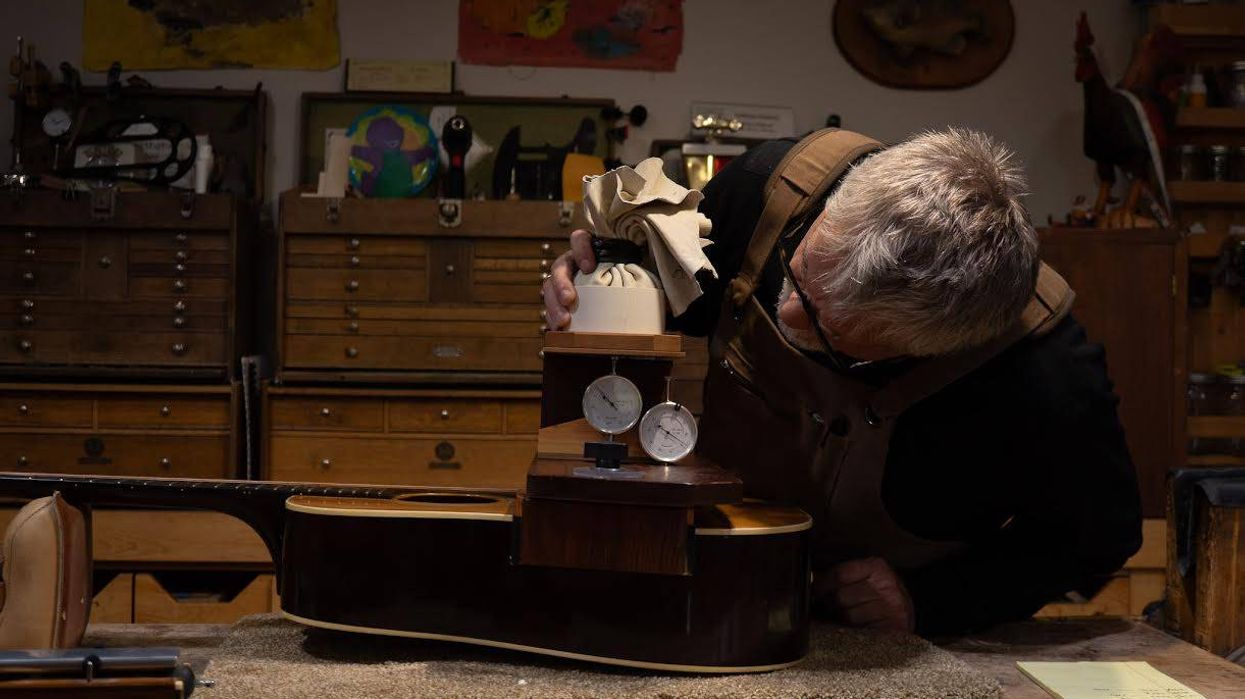When it comes to live music, there has been somewhat of a trend towards quiet—if not downright silent—stages. I've been on a mission of late to make the case for turning up guitars onstage. I'm not talking about an obnoxious level, but more like, say, as loud as the drums! Makes sense, right? The drums are an acoustic instrument, and settling in around the level of the kit to achieve a balanced band sound is all I'm suggesting. I'm of the opinion that the best music is made when all band members can clearly hear themselves (and each other) onstage, with little or no help from monitors. I realize this is sometimes impossible since many guitarists use digital modelers and many bands use in-ear monitors. But, if you're a guitarist using an amp and your bassist uses a bass amp, this month's column is for you!
Guitar + amp = one instrument. The core of any great guitar tone is a guitar plus an amp, so making sure your tone is pleasing, powerful, and inspiring before you ever turn on a pedal is incredibly important. Think about it: So much classic guitar-based music was made with the interaction between the guitar and amp as an integral component of the tone. That feedback loop that happens when you turn up the amp a bit and the speakers start pushing some air? It's magic. When there is no guitar and amp interaction, what you play is what you get, so to speak. When the guitar does respond to an amp, however, guitarists tend to play differently.
For example, a note may begin to feed back, and when this happens, we spontaneously tend to shift our body position and move the guitar around to try to catch even more magic. The spontaneous feedback loop literally becomes part of the music. And the tendency is to play fewer notes, “milk" the notes that you do play as much as possible, and the music tends to sound more dynamic and inspired as a result. There's just something about hearing the tone coming out of the amp's speakers and interacting with the room, as opposed to listening to that tone through a monitor speaker or in-ears. When it's dialed in just right and at a reasonable volume, it's simply more inspiring.
Practice controlling dynamics! These days, a lot of sound techs seem to want little to no stage volume. I do understand that position to a degree, because many modern musicians don't seem to have an understanding about controlling their onstage tone and dynamics. So many guitarists leave the guitar controls on 10 all the time. They also tend to set amps very clean. Then they hit pedals for drive and the tone either disappears or jumps in volume dramatically. If we guitarists worked more on our core tones to make them pleasing and more controlled, maybe the sound techs wouldn't mind a bit more volume coming off the stage. It's the musician's responsibility to give the sound person something great to work with, and it's the sound person's responsibility to keep an open mind. I implore them to really listen to the sound of a band before conveying any changes they would like to hear coming from the stage.
I recently made a YouTube video demonstrating how I like to dial in a Fender Super Reverb amplifier. The Super Reverb is a 40-watt amp with a 4x10 speaker configuration. With the amp volume on 5 and the guitar's volume on 10 when using the bridge pickup, the tone is bright and cutting with the amp on the edge of breakup—and the volume is rather loud! But if you simply roll the guitar's volume control down to 5 or 6 and switch to the warmer neck pickup, things change completely. The tone will be clean, clear, and full, and much quieter. Start adding pedals to the equation, and you can augment the core tone with infinite variations. When the drummer starts laying into it on the chorus, switch to the bridge pickup and now you're cutting through more. And when it comes time for a solo, crank that volume up to 10 on the guitar and hit a boost or drive. The whole band tends to play louder during solos, but you've saved yourself some headroom and volume by running the guitar volume down for most of the song. Think about it: You've given yourself somewhere to go! This is how myriad guitarists—from Jimi Hendrix to Angus Young—created their music.
I'm making a plea here to not allow some of the greatest characteristics of the electric guitar to fade away. The guitar is not a synthesizer, unless we turn it into one. It's up to us to carry on the tradition of the electric guitar being one of the most expressive, dynamic musical instruments of all time.



















